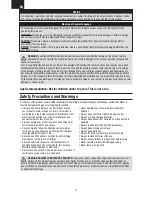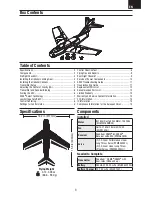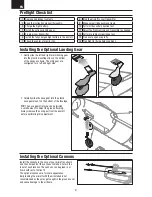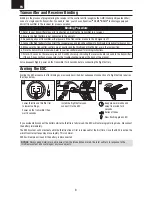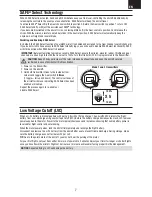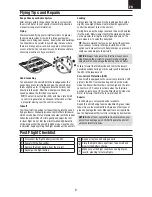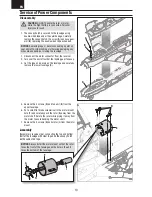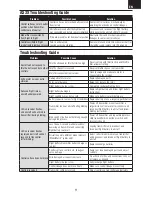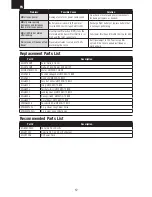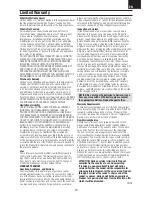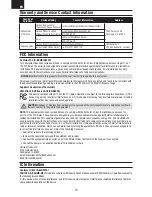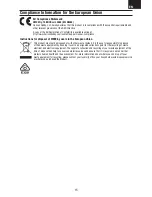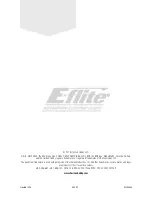
8
EN
Settings for Control Horns
The following illustration shows the factory settings for
linkages on the control horns. After the initial fl ights, adjust
the linkage positions for the desired control response.
Aileron Elevator
Rudder
Before the fi rst fl ights, or in the event of an accident, make
sure the fl ight control surfaces are centered.
Adjust the
linkages mechanically if the control surfaces are not centered. Use
of the transmitter sub-trims may not correctly center the aircraft
control surfaces due to the mechanical limits of linear servos.
1. Ensure SAFE Select is OFF.
2. Make sure the control surfaces are neutral when
the transmitter controls and trims are centered. The
transmitter sub-trim must always be set to zero.
3. When needed, use a pair of pliers to carefully bend the metal linkage (see illustration).
4. Make the U-shape narrower to make the connector shorter. Make the U-shape wider to make the linkage longer.
Centering Controls After First Flights
For best performance with AS3X, it is important that excessive trim is not used.
Do not trim the aircraft while SAFE
Select is active. Always trim the aircraft in AS3X mode. If the model requires excessive transmitter trim (4 or more clicks
of trim per channel), return the transmitter trim to zero and adjust the linkages mechanically so that the control surfaces
are in the fl ight trimmed position.
Control Centering
Control Direction Test
Properly bind your aircraft and transmitter before
doing these tests. Make sure tail linkages move freely
and that paint or decals are not interfering with them.
Switch on the transmitter and connect the battery.
Use the transmitter to operate the aileron and
elevator controls. View the aircraft from the rear when
checking the control directions.
Ailerons
1. Move the aileron stick to the left. The right aileron
should move down and the left aileron up, which
will cause the aircraft to bank left in fl ight.
2. Move the aileron stick to the right. The right
aileron should move up and the left aileron
down, which will cause the aircraft to bank right
in fl ight.
Elevators
3. Pull the elevator stick back. The elevators should
move up, which will cause the aircraft to pitch
up in fl ight.
4. Push the elevator stick forward. The elevators
should move down, which will cause the aircraft
to pitch down in fl ight.
Rudder
5. Move the rudder stick to the left. The rudder
should move to the left, which will cause the
aircraft to yaw left in fl ight.
6. Move the rudder stick to the right. The rudder
should move to the right, which will cause the
aircraft to yaw right in fl ight.
Aileron stick
Elevator stick
Rudder stick


